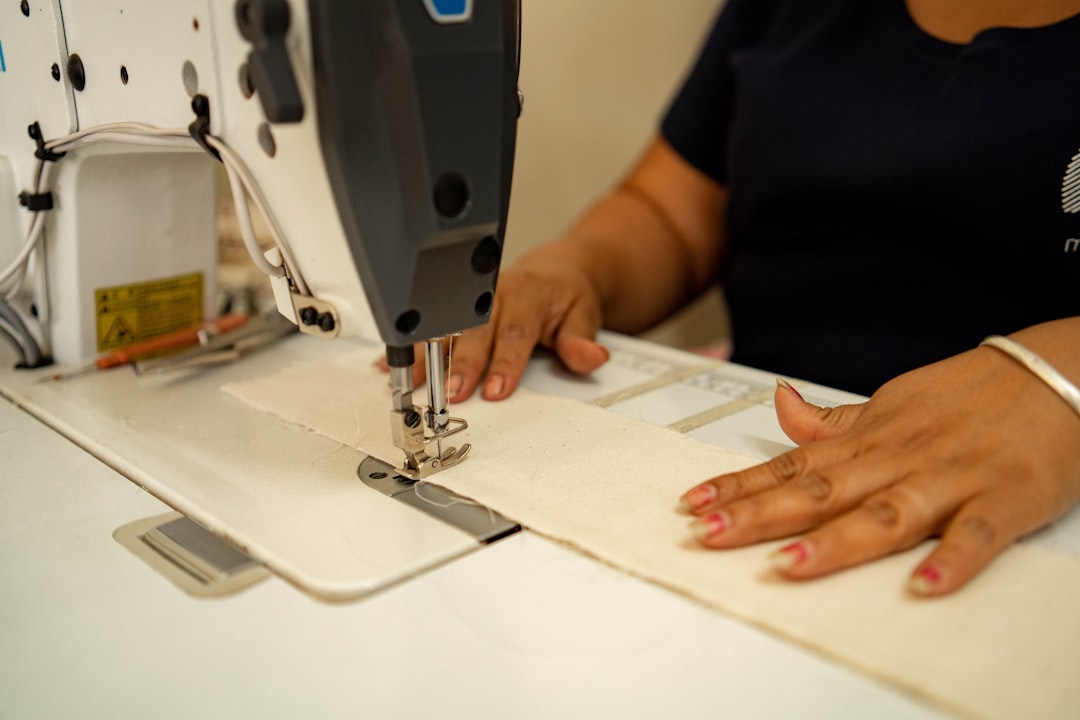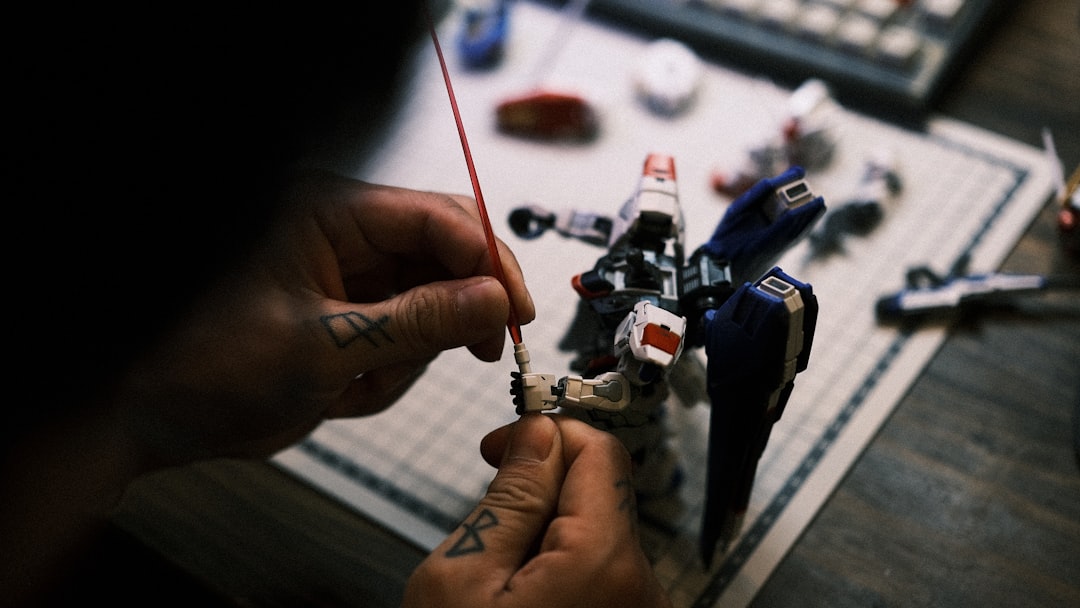

Engage prospects with a scan and streamline customer engagement with FREE QR code marketing tools by Sona – no strings attached!
Create a Free QR CodeFree consultation

No commitment

Engage prospects with a scan and streamline customer engagement with FREE QR code marketing tools by Sona – no strings attached!
Create a Free QR CodeFree consultation

No commitment
Sewing contractors are redefining how apparel brands, garment manufacturers, and fashion retailers connect offline experiences with digital actions. As the demand for seamless ordering, transparency, and product verification grows, sewing contractors face mounting pressure to eliminate friction in client journeys while ensuring quality control and compliance. Outdated brochures, paper forms, and traditional hang tags have limited both engagement and measurability, often leading to missed high-value prospects and leaving teams with critical blind spots into buyer intent that translate into lost business.
QR codes have changed the landscape. By turning every label, invoice, or sample card into a smart entry point, sewing contractors can create tailored digital experiences that boost lead capture, streamline order flows, validate product authenticity, and track customer behavior without requiring app downloads or complex integrations. This level of insight also addresses industry frustrations around missing out on high-intent prospects who avoid paper forms and helps surface engagement signals that previously went unnoticed.
This guide explores how sewing contractors can harness QR code technology to improve efficiency, enhance customer satisfaction, and gain actionable data. Discover key use cases, campaign strategies, best practices, and compliance considerations for unlocking new value at every stage of the apparel production cycle, equipping you to address gaps that have historically held back growth and repeat business.

QR codes bridge the gap between physical touchpoints and digital outcomes, making it easier for sewing contractors to create engaging customer experiences, increase orders, verify product details, and enhance traceability. When a client scans a code on a hang tag, invoice, or packaging insert, they are transported to a digital experience that is measurable and timely. With this approach, every tangible asset in your operation can double as a low-friction gateway to actions that matter.
The shift from analog to digital is especially powerful for teams that still rely on printed order forms, static care labels, and manual follow-up. Instead of hoping a prospect will remember to email later, a scannable call to action turns a moment of curiosity into a captured lead, a submitted RFQ, or a product registration in seconds. And because QR technology does not require an app, adoption is high across buyers, merchandisers, and production partners.
QR-driven strategies replace unreliable manual touchpoints and dated communication loops. As a result, teams gain the granular visibility and follow-up capabilities that modern buyers expect, while creating a cohesive offline-to-online experience that improves both service quality and revenue performance.

For sewing contractors and their clients, QR codes address the stumbling blocks that traditional materials and methods create. Paper collateral often goes unread, URLs are mistyped, and rep follow-up misses the right timing. A well-placed QR code changes that dynamic by making the next step obvious and easy.
Beyond convenience, QR implementations strengthen quality assurance and brand integrity. When codes link to verifiable product data or batch-specific certificates, buyers gain immediate confidence in materials and workmanship. Contractors benefit from the ability to update content on the fly without reprinting, which reduces waste and keeps information accurate.
QR codes on labels and documents validate authenticity, unlock actionable data, and convert anonymous attention into known interest. Together these benefits help contractors modernize operations and build stronger relationships with brands and retailers. Insights on why brands view QR as the future of labels are covered in this Inc. analysis.

The most impactful QR code formats for sewing contractors solve real pain points around anonymous traffic, cumbersome forms, and ineffective follow-up. Selecting the right format for each touchpoint ensures both a smooth scanner experience and trustworthy data capture for your team.
Different formats shine in different contexts, from connecting to product specifications to enabling quick contact saves at trade shows. In most cases, dynamic QR codes provide the flexibility and analytics that operations and marketing teams want, while static codes can be reserved for evergreen content that never changes.
Dynamic QR codes are especially valuable for sewing contractors. They allow you to change destinations, run A/B tests, track account activity by placement, and segment communications as buyer needs evolve. Reserve static codes for limited uses like permanent equipment labels or evergreen documents.

Strategic QR code placements empower sewing contractors to fill funnel gaps and eliminate moments where high-intent interest is typically lost. By placing scannable prompts on assets buyers already touch, you make it convenient to explore, convert, and provide feedback without leaving the moment.
Think of each physical item your customer sees as a potential gateway. If the next best action is clear and the value is compelling, scan rates will rise and your data will become more predictive. This approach turns everyday materials into a measurable growth engine.
Harnessing QR codes across these placements transforms broad outreach into targeted, measurable engagement. The result is better ROI on print collateral, clearer visibility into buyer intent, and the discovery of growth segments that were previously invisible.

QR codes are most effective when they replace a point of friction with a simple, guided experience. For sewing contractors, three categories consistently drive measurable outcomes: authenticity and traceability, on-demand ordering, and quality feedback and resolution.
The following use cases can be deployed incrementally or as part of a comprehensive program. Even a single well-executed use case can create a quick win that builds buy-in across teams and clients.
Each use case replaces a traditional point of data loss with a modern, conversion-friendly experience. Over time, these interactions compound into an intent-rich dataset that makes forecasting, capacity planning, and account nurture more precise.
Every QR scan provides a chance to map and segment leads by journey stage. If you deploy multiple codes across different materials and contexts, you can infer intent from what was scanned, where it was scanned, and what happened next. This insight unlocks targeted follow-up that feels helpful instead of generic.
For sewing contractors, audience distinctions can be nuanced. The person scanning may be a brand merchandiser seeking quotes, a retail buyer evaluating quality, a designer checking care details, or a production manager verifying batch status. Segmenting by role and action keeps your content and offers relevant.
For deeper segmentation using behavioral signals, see Sona’s intent data guide.
Modern QR platforms turn audience blind spots into opportunities by connecting one scan to an entire workflow. The outcome is a pipeline that no longer depends solely on web forms and manual uploads but instead builds itself from real behavior.
QR codes unify marketing assets by turning static materials into interactive gateways. Sewing contractors can connect catalogs, spec sheets, sample kits, and even showroom displays to digital destinations that are measurable and updatable. This reduces friction for buyers and gives teams a single source of truth about what is working.
When you integrate QR codes across channels, your offline programs begin to look and feel like digital campaigns in terms of tracking and optimization. The same rigor you apply to email or paid media can guide your print, event, and packaging strategies, which raises ROI across the board.
QR codes serve as the offline onramp to your digital marketing engine. With a centralized platform, you can manage all codes in one place, monitor performance across channels, and sync scan data with your CRM and advertising tools.
Successful QR programs are driven by clarity of purpose and disciplined execution. By moving through a repeatable workflow, your team can launch with confidence, measure impact quickly, and scale what works. Start small with one or two use cases, then expand once the data shows traction.
The steps below align to a typical sewing contractor workflow, from goal setting to optimization. Use them as a blueprint for your first pilots and as a quality checklist for future campaigns.
Clarify what business outcome you want to influence. Examples include increasing qualified RFQs from sample kits, reducing counterfeit claims with on-label verification, and improving post-delivery feedback rates on quality. Link the goal to a measurable metric such as scan-to-form conversion, first-response time, or reorder frequency.
Map the current analog touchpoint that is underperforming. If trade show brochures are not converting, replace them with QR-enabled lookbooks and a vCard save. If invoice emails are missed, put a scan-to-reorder code on the document itself. The clearer the friction point, the stronger the case for change.
Select static codes only for destinations that will never change, such as a permanent safety manual or machine specification page. Static codes are quick but hard to measure and cannot be changed after printing.
Use dynamic codes for most customer-facing use cases. Dynamic links give you analytics, enable destination edits, and support A/B testing. They are ideal for pricing updates, campaign pages, authentication flows, and forms that may evolve based on buyer feedback.
Ensure strong contrast between the code and background, and size codes appropriately for viewing distance. For garments and labels, test different finishes to avoid glare and distortion. Add a descriptive call to action near the code, such as Scan to verify fabric origin or Scan to request samples. See how QR is weaving into fabric for innovative branding.
Maintain brand consistency by incorporating your logo and colors within safe design boundaries. Use a short vanity URL under the code as a backup for users who prefer typing. Test print quality across substrates like coated hang tags, woven labels, and kraft cartons.
Roll out codes where they will be seen during decisive moments. Prioritize placements such as hang tags at point of evaluation, invoice headers at point of reorder, and shipping box flaps at point of receipt. For trade shows, position codes at eye level and include them on takeaways to capture post-event interest.
Coordinate with sales and account teams so they can reinforce calls to action during conversations. Provide a short script or talk track for each placement that explains the value of scanning and sets expectations for what happens next.
A clear workflow ensures reliable and transparent demand generation pipelines, making it easier to attribute wins to specific placements and iterate with intent.
Track scan volume by asset, location, and time of day. Monitor downstream actions such as form submissions, meeting bookings, and reorders. Use this data to compare the performance of different calls to action and creative treatments.
Run simple A/B tests on headlines, landing pages, or code designs. Retire underperforming placements and double down on those that convert. Share wins and learnings across teams so design, production, sales, and marketing can collaborate on continuous improvement.
Standard analytics often miss the signal behind the scan. Knowing that someone interacted with a code is helpful, but the real value comes from connecting that event to a buyer journey, a conversation, and ultimately a purchase. Sewing contractors that close this loop turn a simple interaction into a measurable revenue driver.
A robust analytics setup captures scan attributes, ties them to people and accounts, and feeds that intelligence to both marketing and sales. This shifts conversations from guessing to acting. Over time, your team can forecast demand with more confidence and allocate resources to the assets that consistently produce results.
Modern platforms can track scans by time, device, location, and source, then sync insights into CRMs and ad tools. With this infrastructure, you prove impact, optimize spend, and make QR programs a durable part of performance marketing.
Once your pilot campaigns are running, a few best practices will help you scale smoothly and sustain performance. The goal is to preserve simplicity for scanners while increasing fidelity for your data and follow-up.
Focus on the placements, messages, and workflows that your buyers actually use. Trim anything that creates friction or confusion. Educate your team and your customers so that scanning becomes a natural step rather than an extra chore.
QR-enabled certificates on eco-labels are another quick win. They support compliance by hosting traceable documentation while also capturing who cares about sustainability content, which becomes a valuable targeting signal for future campaigns.
Transitioning from anonymous assets to QR-tracked engagement requires a careful look at privacy, data handling, and industry standards. Sewing contractors often work with multiple brands across different regions and must accommodate a variety of legal frameworks. A thoughtful approach protects both your business and your customers while preserving the benefits of real-time data.
Privacy considerations begin with what you collect and how you inform users. They extend to how long you store data, who can access it internally, and how you secure it. The right foundations reduce risk and simplify audits down the road.
Ongoing compliance is not a one-time checklist. Build a cadence for content reviews, access audits, and vendor assessments. This discipline preserves trust and ensures your QR programs remain an asset rather than a liability.
QR adoption in sewn goods is accelerating as contractors prove that small design changes can deliver big gains. Industry leaders report measurable improvements, including double-digit increases in quote requests and reductions in order errors after adopting QR-enabled processes. The pattern is consistent: when you make the right action immediate and trackable, performance follows.
Consider the end-to-end choreography of your client’s journey. From the first sample touch to the final invoice, there are multiple points where a scan can guide behavior and capture intent. Use the examples below as inspiration, then tailor them to your workflow and brand voice.
Experts highlight that QR workflows create a direct line from end-client feedback to the production floor. A photo-enabled defect report captured via QR can route immediately to the right team with all necessary context, which shortens resolution cycles and reveals process improvements. Creative teams also use QR codes to spark user-generated content and referral programs, rewarding scanners who submit looks or share fit tips while tracking participation securely. Tie these campaigns to giveaways to boost participation.
QR codes are more than a shortcut for sewing contractors. They are a strategic lever for elevating client experience, ensuring supply chain transparency, and driving measurable improvements in lead capture and account retention. By enabling instant engagement and deeper data capture at every touchpoint, QR technology addresses long-standing challenges such as missed follow-up, anonymous traffic, and fragmented processes. Learn more about apparel trends and integrations in this brief on QR codes for tailoring.
From on-demand reordering and product authentication to precise intent tracking for upsell and compliance reporting, modern QR solutions give both marketing and operations teams the ability to respond proactively to client needs. The result is a data-driven approach that overcomes the pitfalls of incomplete tracking and missed high-value opportunities, while building a resilient foundation for growth.
Explore QR innovations to transform your workflows. Pilot one use case, measure results, and refine your approach. With an iterative mindset and the right tools, sewing contractors can turn every physical touchpoint into a digital bridge that accelerates decision-making and strengthens customer relationships. Start creating QR codes for free.
QR codes have revolutionized the sewing contractors industry by transforming how businesses connect with clients, streamline operations, and showcase their craftsmanship. Whether it’s simplifying project tracking, enhancing client communication, or providing instant access to design portfolios, QR codes replace cumbersome manual processes with seamless, mobile-friendly interactions that elevate the customer experience and boost operational efficiency. Imagine instantly sharing detailed garment specifications or real-time order updates with just a scan—making every client interaction smoother and more transparent.
With Sona QR, sewing contractors can create dynamic, trackable QR codes in seconds, update information on the fly without reprinting, and link every scan to actionable insights that drive growth and client satisfaction. No more lost documents or communication gaps—just smarter, more responsive project management that keeps your business ahead of the curve. Start for free with Sona QR today and turn every scan into a stronger client relationship and a step toward your next successful contract.
Sewing contractors using QR codes enhance lead capture, streamline order flows, verify product authenticity, improve quality control, and provide actionable data to boost customer satisfaction and business growth.
Choose a sewing contractor that integrates modern digital tools like QR codes to ensure seamless ordering, quality assurance, traceability, and transparent communication throughout the garment production cycle.
Services include product traceability and authentication, on-demand ordering and sample requests, real-time feedback and quality control, as well as compliance documentation and sustainability certifications.
Use QR codes embedded on labels or batch stickers to link to verification pages with product data and inspection status, enabling immediate authenticity checks and faster quality issue resolution.
While specific costs vary, integrating QR code solutions can reduce manual follow-up, errors, and waste, resulting in cost savings through improved order accuracy and enhanced operational efficiency.
QR codes provide convenient, app-free access to digital catalogs, order forms, product verification, and feedback channels, turning physical touchpoints into interactive, measurable engagement opportunities.
Best practices include designing branded, high-visibility codes with clear calls to action, placing them on key assets like hang tags and invoices, using dynamic codes for flexibility, and monitoring analytics to optimize performance.
Analytics help identify high-value prospects, track buyer intent and engagement, attribute revenue accurately, and enable targeted follow-up by segmenting audiences based on scan behavior and asset source.
Contractors must comply with data privacy regulations like GDPR and CCPA, ensure secure data handling, maintain up-to-date content linked via QR codes, and support supply chain transparency through traceable documentation.
They can unify print collateral, trade show materials, digital signage, and direct mail by adding QR codes that link to interactive digital content, enabling measurable, updatable campaigns that connect offline and online channels.
Use Sona QR's trackable codes to improve customer acquisition and engagement today.
Create Your FREE Trackable QR Code in SecondsJoin results-focused teams combining Sona Platform automation with advanced Google Ads strategies to scale lead generation

Connect your existing CRM

Free Account Enrichment

No setup fees
No commitment required

Free consultation

Get a custom Google Ads roadmap for your business






Launch campaigns that generate qualified leads in 30 days or less.
